- Home
- Prelims
- Mains
- Current Affairs
- Study Materials
- Test Series
Feb 24, 2022
INDIA-CENTRAL ASIA SUMMIT: SHAPING GEOPOLITICS IN THE EXTENDED NEIGHBOURHOOD
India and the Central Asian Republics have embarked on a new era of robust strategic partnership that was reflected by the successful conclusion of first-ever summit hosted by the Prime Minister of India, Narendra Modi, recently on 27 January 2022 in virtual format.
 Findings of the Summit
Findings of the Summit
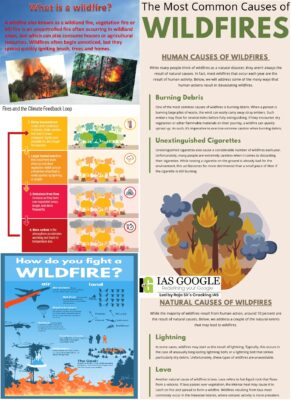 What is Wildfire?
What is Wildfire?
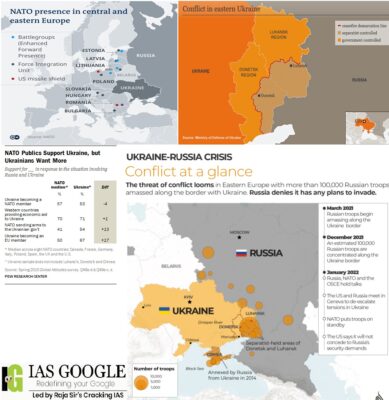 Normandy Format
Normandy Format
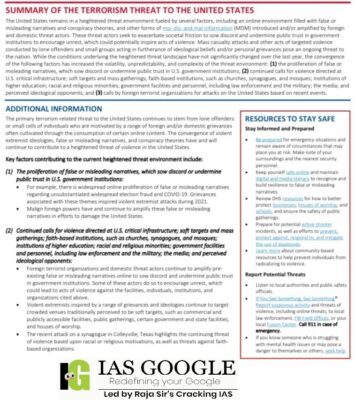 Consequence:
Consequence:
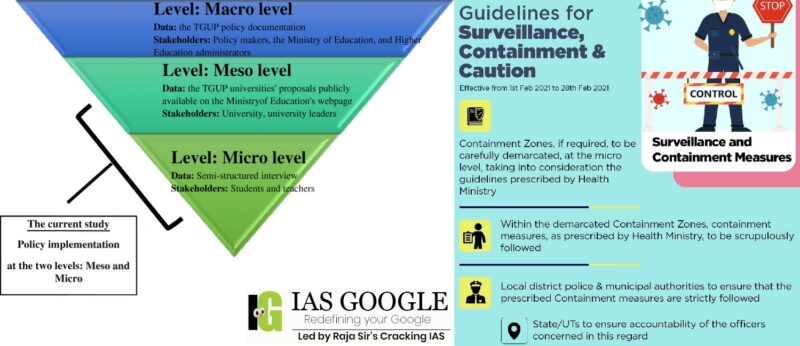 Technological developments Vs Surveillance architecture
Technological developments Vs Surveillance architecture
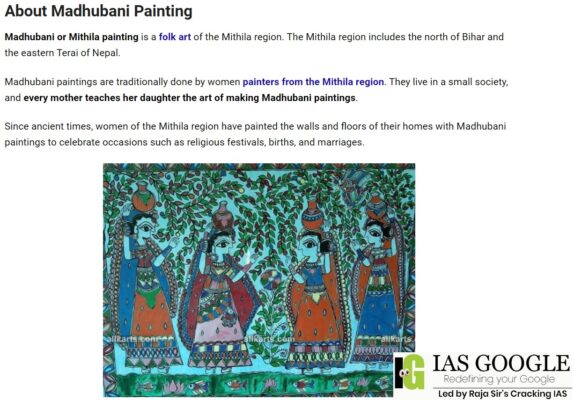 Madhubani Painting
Madhubani Painting
 Crisis in Afghanistan
Crisis in Afghanistan
 What was the trouble at ABG Shipyard?
What was the trouble at ABG Shipyard?
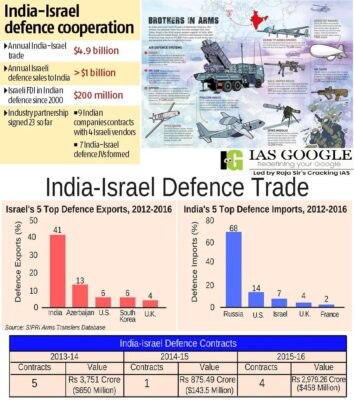 Defence imports to be reduced
Defence imports to be reduced
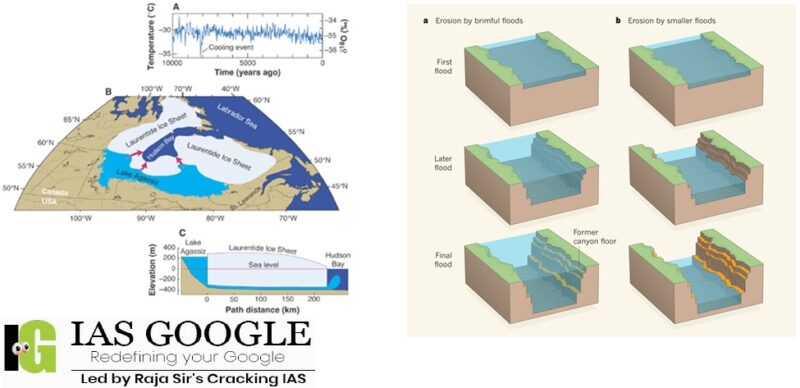 Highlights of the study
Highlights of the study
- This event was attended by the presidents of the Republic of Kazakhstan, Kyrgyzstan, Tajikistan, Turkmenistan, and Uzbekistan. The first India-Central Asia Summit, while coinciding with the celebrations of the 30th anniversary of establishment of diplomatic relations between India and the Central Asian countries, is considered as a landmark event that resonates the strong resolve of the leaders of two sides in taking up the relations to newer heights in a comprehensive and enduring manner.
 Findings of the Summit
Findings of the Summit
- It has accounted for the far-reaching ramifications in determining stability, security, and geostrategic equilibrium in New Delhi’s western frontier, thereby, showcasing the efficacy of India’s “Extended Neighbourhood Policy” in addressing the emerging challenges in the region with strong determination, under the spirit of reformed multilateralism and transparency in global governance.
- India and the Central Asian countries have been rapidly consolidating strategic engagement in addressing the emerging challenges, based on mutual trust, understanding, and shared vision of security and progress for the people of both sides.
- The connectivity projects were visualized by the leaders as “force-multiplier for trade and economic cooperation, and contacts between countries and people” and therefore, they need to be upgraded with top priority.
- For this purpose, a JWG has also been established to streamline the connectivity process. It was also agreed upon to optimally utilise the International North-South Transport Corridor (INSTC) as well as Ashgabat Agreement on International Transport and Transit Corridor (ITTC) to enhance connectivity between India and the Central Asian countries.
- Towards enhancing energy connectivity, the summit emphasised on the need to establish cooperation between specialised national institutions in areas of renewable energy, information, digital, and advanced technologies.
- Regarding the COVID-19 pandemic, the leaders called for emboldening collective efforts to fight the health menace. The Summit categorically emphasised on the importance of “extensive vaccination, vaccine supply, transfer of technology, development of local production capacities, promotion of supply chains for medical products, and ensuring price transparency.”
- With a view to enhance people-to-people contact and harness human talent between each other, the Central Asian leaders appreciated New Delhi’s role in capacity building and human resource development of their countries.
- India has enjoyed historical and civilizational linkages with Central Asia through the Silk Route from 3rd century BC to 15th century AD, when the sea route from Europe to India was discovered.
- The Silk route connected the two regions not only for transportation of goods like silk, textiles, spices etc. but also served as an effective channel for exchange of thoughts, ideas, religion, and philosophy.
- All these states are rich in minerals and well-endowed with hydroelectric resources.
- Kazakhstan has the world’s second largest reserves of uranium and is the world’s largest producer;
- Uzbekistan has large reserves of gas, uranium and gold;
- Turkmenistan has fourth largest reserves of natural gas;
- Tajikistan has huge hydroelectric potential;
- Kyrgyzstan is rich in gold and hydroelectric power.
- India uses its considerable soft power through dance, music, Bollywood films, yoga, literature etc. India’s international Technical and Economic Cooperation (ITEC) programme attracts young professionals for capacity building.
- There is considerable scope of participation in trade fairs, and in building infrastructure projects, as in rail, road, highways, power transmission lines, nuclear power, etc.
- In addition to oil and gas, IT, pharma and textiles, higher education, space, SME, power generation, food processing and agriculture present rich potential for deeper engagement. SCO may serve as a guarantor for the projects.
- Religious extremism, fundamentalism, drug trafficking pose challenges to these societies and to regional stability.
- Issues relating to water, security, environment, migration have become acute. The region faces newer threats of narco-terrorism emanating from Afghanistan.
- That India does not share a common land border with any of these states has been a major bottleneck in promoting and expanding ties. Pakistan does not allow direct routes to either Afghanistan or to Central Asia.
- China has come to pose an even greater geo-political threat to India. This apart, compared to $100b trade turnover with China, the region’s trade with India is only $2b.
- Though India is part of the Turkmenistan-Afghanistan-Pakistan-India (TAPI) pipeline, progress is slow.
- Greater engagement is expected to help improve mutual security and regional economic prosperity. Economically, Central Asia provides a ‘near abroad’ market for India’s industry, overland routes to rich resources of Russia and Middle East, and significant energy supplies at relatively short distances.
- The INSTC corridor route is shorter than Suez and the Mediterranean Sea. Central Asia’s location, its geographical proximity to India, ancient linkages render the region highly relevant to India’s strategic interests. India has a huge goodwill in Central Asia.
- Wildfires are a natural phenomenon, but are becoming more dangerous and affecting larger areas. The UN report has attributed this to climate change and human activities.
 What is Wildfire?
What is Wildfire?
- A wildfire is an unplanned fire that burnt in a natural area such as a forest, grassland, or prairie.
- Wildfire, also called wildland fire, uncontrolled fire in a forest, grassland, brushland, or land sown to crops. The terms forest fire, brush fire, etc., may be used to describe specific types of wildfires; their usage varies according to the characteristics of the fire and the region in which it occurs.
- Wildfires are often caused by human activity or a natural phenomenon such as lightning, and they can happen at any time or anywhere.
- Fire danger in a wildland setting varies with weather conditions: drought, heat, and wind participate in drying out the timber or other fuel, making it easier to ignite.
- Species rich forests have better resistance to fire.
- Different trees have varying degrees of fire resistance depending on the thickness of bark.
- Bushfire triggers an explosive storm called Pyro Cumulonimbus and it injects particles as high as 10 miles in the air.
- The trends towards more dangerous fire-weather conditions are likely to increase due to rising concentrations of atmospheric greenhouse gases and the attendant escalation of wildfire risk factors.
- There has been a rapid expansion of cities towards forest areas in many regions in recent decades. This wild land-urban interface is the area where wildfire risks are most pronounced.
- Wildfires seldom spread to humid tropical forests in the past. But these forests are now more vulnerable due to deforestation and forest fragmentation.
- Extreme weather events such as hotter temperatures and more droughts lead to longer fire seasons and increase the likelihood of fire weather conditions.
- Lightning strikes are projected to increase in frequency in some parts of the world as the climate changes. Lightning ignition is the predominant driver of massive wildfires in the boreal forests of North America and northern Siberia.
- Wildfires also help keep ecosystems healthy.
- They can kill insects and diseases that harm trees.
- By clearing scrub and underbrush, fires can make way for new grasses, herbs, and shrubs that provide food and habitat for animals and birds.
- At a low intensity, flames can clean up debris and underbrush on the forest floor, add nutrients to the soil, and open up space to let sunlight through to the ground. That sunlight can nourish smaller plants and give larger trees room to grow and flourish.
- Wildfires increase air pollution in surrounding areas and can affect regional air quality.
- The effects of smoke from wildfires can range from eye and respiratory tract irritation to more serious disorders, including reduced lung function, bronchitis, exacerbation of asthma and heart failure, and premature death.
- Many native species can be pushed to a threatening level as species lose their lives.
- Wildfires simultaneously impact weather and the climate by releasing large quantities of carbon dioxide, carbon monoxide and fine particulate matter into the atmosphere.
- Wildfire prevention, response and management calls for improved planning and policies coupled with practices. It is important to enhance fire-fighting capabilities and strengthen community resilience-building programmes.
- A preventive approach, rather than reactive approach by engaging vulnerable groups, will help adapt to wildfires.
- Appreciating and adopting indigenous fire management techniques. Focus on long-range weather forecasting.
- Focus on remote-sensing capabilities such as satellites, ground-based radar, lightning detection as well as data handling.
- Firefighting forces specially trained to deal with wildfires are maintained by public and private owners of forestlands. Such a force may attack a fire directly by spraying water, beating out flames, and removing vegetation at the edge of the fire to contain it behind a fire line.
- Backfiring is used only as a last resort. Prescribed fires, in which controlled fires are intentionally set to decrease the fuels in a given area and to promote the health of fire-adapted ecosystems, can be used to prevent or mitigate wildfires. Airplanes and helicopters are primarily used for dumping water, for observation, and occasionally for assisting in communication and transporting personnel, supplies, and equipment.
- In this era of warmer, drier summers and longer fire seasons, there are no fire- or smoke-free solutions. The current approach to fire management poses unnecessarily high stakes for Western forests. There is no doubt that the future of Western forests is a fiery one.
- European leaders and the US President Joe Biden are talking bilaterally to Russian President Vladimir Putin.
- Germany and France have brought Ukraine and Russia on to the same table in an attempt to defuse tensions through talks among the four of them.
- The latter is known as the Normandy Format and receives special attention because it is the only format where the Ukrainian President is talking directly to his Russian counterpart.
 Normandy Format
Normandy Format
- It is a group of four countries France, Germany, Ukraine and Russia formed in the aftermath of the Crimea crisis in 2014.
- It is aimed at diffusing tensions between Russia and Ukraine.
- The First meeting was initiated by the then French President François Hollande and German Chancellor Angela Merkel who brought Russian President Vladimir Putin and then Ukrainian president Petro Poroshenko together for a dialogue led to Minsk Protocol.
- It is a set of two agreements between Ukraine and Russia mediated by France and Germany in 2014 and 2015.
- Minsk-I (2014): Normandy Format members established the Trilateral Contact Group (TCG), comprising Russia, Ukraine and the Organization for Security and Co-operation in Europe (OSCE).
- Aim: Consultations to develop a peace plan.
- Minsk-I came at a crucial time when about 6,500 Russian troops invaded an ongoing war (between Ukrainian Government forces and Russian-backed Separatist group) in Donetsk Oblast in September 2014 and Ukraine suffered heavy losses.
- It called for a ceasefire and several de-escalating steps.
- However, Minsk-I soon broke down and by January 2015, full-scale fighting had started again.
- In February 2015, a new ceasefire, known as Minsk-II, was negotiated.
- Signed by representatives from the OSCE, Russia, Ukraine and the separatists from Donetsk and Luhansk, has been the framework for subsequent attempts to end the war.
- The Minsk-II agreement was also endorsed by UNSC Resolution 2202 on 17 February 2015.
- Russia not a direct party: It does not make Russia a direct party although it was signed by the Russian Ambassador to Ukraine, Mikhail Zurabov, the agreement does not mention Russia.
- Which was in favour for Russia to evade responsibility for implementation and maintain itself as a disinterested arbiter.
- Hence, in effect, it is only dealing with Ukraine and the separatists in the East thereby giving Russia the leeway to violate it citing technicalities.
- A few more Normandy Format meetings took place in the years that followed. Nevertheless, an agreement was reached to remove light and heavy weaponry.
- It was designed to implement the political clauses of the Minsk accords (I and II), especially about holding elections in Donbass.
- It failed because it was in line with Russia’s interpretation but against Ukraine’s national interests.
- It was held on 26 January 2022 in Paris and was attended by advisers to the leaders of the Normandy Four.
- The advisers promised unconditional support to the observance of the ceasefire, which was agreed on 22 July 2020.
- It happened on 10 February 2022.
- A consensus was achieved on the Ukrainian suggestion to unblock the work of the Trilateral Contact Group towards a peaceful settlement about humanitarian issues in the Donbass war
- No linear solution to the crisis in Eastern Ukraine.
- She could speak Russian and was known for her impressive consensus-building skills.
- The long impact of the Merkel era and her equation with Putin is something that the newly elected Scholz cabinet does not enjoy.
- EU believed in the idea that its economic weight may be converted into geopolitical power and influence.
- To achieve this EU needs to respond to economic coercion by China and structural changes within its security and fiscal policies as proposed by Macron.
- Ukraine has supported the US involvement in the Normandy Format for balancing Russia’s presence because neither France nor Germany are in a position to deter Russia.
- The US has decided to not join the Format but continues to support its diplomatic developments.
- From the Russian perspective, the US would make the entire peace process collapse its related to US suggestions in Minsk clause.
- Energy: It has been pushing for dialogue because of its dependence on Russia for natural gas and other commercial interests.
- Economy: The leaders of some of Germany’s biggest companies like Siemens AG, Bayer AG, Deutsche Bank AG, SAP AG and Volkswagen AG are set to meet Russian President Putin early next month in a show of economic diplomacy aimed at urging all sides in the Ukraine standoff to back away from war.
- In 2021 Germany’s exports to Russia grew by 15 per cent and its imports from Russia grew by 48 per cent from 2020.
- Armoury: Recently, Germany blocked the fellow NATO ally, Estonia, from providing military support to Ukraine and refused to issue permits for German-origin weapons to be exported to Kyiv.
- Economy: French business interest has big stakes in Russia in the energy, locomotive and food sectors.
- Defence: Russia’s favourable view of France may be inferred from Macron’s emphasis on the idea of European Defence that is separate from NATO.
- AUKUS: It is logical for Moscow to leverage this French anger towards the US through the recent unpleasantries around AUKUS. AUKUS came the first serious cleavage in the 150-year-old US–France alliance.
- Energy: The dialogue helps secure Russia’s larger economic interests Gazprom’s stakes with Nord Stream 2, the volatility in financial markets due to ongoing East–West tensions is also worrying.
- Economy: There has been heavy selling on Moscow’s volatile stock market, with the high prices of oil and gas Molex index The Russian side is under mounting economic pressure.
- The Normandy Format indeed offers a ‘Pareto optimal’ space for any sustainable solution towards settlement. Its efficiency should be assessed in terms of prevention of a ‘major war’ in Europe, development of settlement mechanisms like the Minsk agreements and the ceasefire line.
- US ORIENTED: It highlights “widespread online proliferation of false or misleading narratives regarding unsubstantiated widespread election fraud and COVID-19.” It adds that this is one of the key factors contributing to the current heightened threat environment in the United States (US).
- GLOBAL PERSPECTIVE: It mentions that DHS is “working with public and private sector partners, as well as foreign counterparts, to identify and evaluate “mis-, dis-, and mal-information” (MDM), including false or misleading narratives and conspiracy theories spread on social media and other online platforms that endorse or could inspire violence.”
 Consequence:
Consequence:
- These two points taken together imply that anyone posting MDM on social media about COVID-19 or elections will potentially be regarded as a domestic threat actor and, therefore, subject to surveillance.
- The wide cooperation that social media platforms ‘Big Tech’ are extending to the government in moderating the content on their websites and carrying out surveillance.
- As revealed by whistle-blower, Edward Snowden in 2013, Big Tech platforms including Microsoft, Google, YouTube, Facebook, and Apple had all willingly participated in the PRISM digital surveillance programme executed by the US National Security Agency (NSA).
- Acting as surveillance intermediaries, these social media platforms helped the NSA harvest communications content and associated metadata.
- Compare this cooperative attitude in the US. to Big Tech’s confrontationist approach towards the Indian security establishment in similar matters of disinformation and propaganda.
- Last year, on Republic Day, when farmers’ protests in Delhi peaked with the violence at the Red Fort, the Indian government directed social media platforms to take down the anti-India content and some accounts that it believed incited violence.
- However, platforms like Twitter played hardball by taking a stubborn position.
- Although it temporarily suspended hundreds of accounts, Twitter refused to put an outright ban on such content, arguing that its position was as per its “principles of defending protected speech and freedom of expression”.
- A similar defiant attitude was displayed when the government on 25 February 2021 notified new norms under the Information Technology (Intermediary Guidelines and Digital Media Ethics Code) Rules, 2021, classifying many Big Tech platforms as ‘significant social media intermediaries.
- These rules mandated additional due diligence, including publishing monthly compliance reports, identifying the “first originator of the information,” and appointing a nodal officer for 24×7 coordination with law enforcement agencies.
- In response, Twitter resisted compliance and argued that the new rules undermined free speech. Meanwhile, Facebook-owned WhatsApp messaging service sued the Indian government claiming that the new rules would violate the privacy of its users.
- It is selective in choosing which national rules to comply with and which to resist. This selective approach enables it to profit from the hate speech and disinformation thriving on its platforms while grandstanding about free speech and hiding behind ‘safe harbour provision’ when it comes to complying with national rules.
- It will abide by the western governments’ regulations, given the latter’s strong anti-trust laws and stringent regulatory pressure, but when it comes to the developing world’s regulations, Big Tech will seek leeway.
- It is time India shows the way forward by making the Big Tech platforms answerable. India need not necessarily strengthen the anti-competition regulations, design a robust content code, enforce data localisation, and foster an ecosystem of social media platforms. By doing this, India can protect its citizens’ data and privacy, shield them from harmful content while simultaneously creating a fair marketplace and stimulating innovation. Such an approach will demonstrate India’s commitment to an inclusive global digital order and give a sense of ownership to the developing world.
- Surveillance as statecraft finds its roots in history, to monitor the actions of citizens for both defined and undefined purposes.
- One defined and legitimate purpose is to preserve national security, but the current state of surveillance reform in India is on an uneven keel between national security and privacy.
 Technological developments Vs Surveillance architecture
Technological developments Vs Surveillance architecture
- Intrusive and damaging to our democratic safeguards. For instance, the recent case of Pegasus “snoop gate”, can take control over the infected devices without the knowledge of the recipient.
- Historically, in India, surveillance has been a right of the state to deploy intrusive measures against citizens with minimal checks and balances.
- At the macro-level, the state uses various digital surveillance tools like CCTVs and facial recognition cameras to track the actions of the citizens as a mass.
- Recently, India bagged a couple of top ranks in Forbes list of the most surveilled cities in the world, where Delhi stood at rank one and Chennai at rank three.
- Besides, the state in the past has incentivised lateral surveillance at the peer-to-peer level to encourage citizens to monitor others for unlawful activities and report to the authority.
- For instance, recently Indian Cyber Crime Coordination Centre under the Ministry of Home Affairs launched the cyber volunteers’ programme, which seeks citizens to report unlawful activities on the internet and social media.
- At the micro-level, the state is empowered to perform targeted surveillance in the form of interception.
- There are various lawful interception systems available in the Indian market which are installed into the networks of telecom services and internet services by the government through the license agreement.
- Though interception is legal in India under specific legal grounds, hacking is a punishable offence under the Information Technology (Amendment) Act, 2008 (Section 43 and 66).
- The investigation reported that targets were concentrated in countries where unlawful surveillance and poor legislative protections were prevalent.
- In which 300 phone numbers that were surveilled belonged to serving ministers, journalists, opposition leaders and judges, businesspersons, and activists from India.
- At present, in India, there is absence of a data protection regime and robust surveillance reform.
- The profiling of the individuals is therefore taking place in silos, without key terms like suspects, suspicious activities, etc., being defined.
- For example, the Niira Radia phone tapping case revealed that the government doesn’t always follow procedures with intercepted files to protect the right to privacy of the target, where the personal conversations were retained in addition to the relevant portions, since these interceptions did not concern national security, to begin with.
- Under the Indian Telegraph Act, 1885 [Section 5(2)] and Information Technology (Amendment) Act, 2008 (Section 69), the state can “intercept, monitor, and decrypt any information for protecting sovereignty, national security, friendly relations with international governments, integrating public order etc.”
- The lack of clarity in these terminologies also provides leeway to the state to operate in opacity, exacerbated in the absence of an oversight mechanism, which doesn’t go beyond the same department.
- Surveillance under broad mandates such as “to maintain public order, national security, and public safety”. These terms stand undefined, and their contours are not clear in the legislation or backed by clearly-worded SoPs.
- The current regulatory framework allows the Central and state government directly or notified agencies to conduct an interception of the communication without any oversight or contestation of the Parliament and judiciary.
- The Information Technology (Procedure and Safeguards for Interception, Monitoring and Decryption of Information) Rules, 2009, provides that no agency or a person can perform interception without direction and approval of the competent authority.
- The definition of competent authority under the rules remains at an inter-department level, at present, the Home Secretary or Joint Secretary (in case of emergency during the absence of the Home Secretary).
- This authorisation mechanism of interception within the executive wing without any parliamentary or judiciary oversight or involvement is meagre.
- This is especially concerning as the maximum number of fundamental rights breaches are against the state, whereas excessive executive oversight has also kept the judiciary at arm’s length.
- While the Public Accounts Committee (PAC), formed by the parliament, audits the revenue and expenditure of the state, the national security funding like the National Technical Research Organization budget is categorised as special funds which don’t come under the purview of the PAC.
- As a country that houses one of the largest democracies, our duty to empower our citizens towards their rights is as important as our duty to preserve national security. At present, the legislation thrust apparent through the amendments made to the IT Act 2000 via the IT Rules 2021 and the wide exemptions to government and allied agencies in the proposed Data Protection Bill 2021 are taking the route that prefers to exempt or weaken privacy practices towards citizens as opposed to putting in place privacy-respecting practices. An unfortunate consequence of adopting such methods is that often this compromises the privacy and security of law-abiding citizens themselves.
- This gamut of artists includes Pushpa Kumari—incidentally the only Indian artist in the exhibition—who has contributed a Madhubani painting, titled Joy of Living. This ink on paperwork exudes optimism, as masked figures try to find joy in the existing circumstances.
 Madhubani Painting
Madhubani Painting
- Traditionally done by the women of villages around Madhubani town, it is also called Mithila Paintings.
- The art extends to the adjoining parts of Terai region in Nepal.
- The paintings have a common theme and are usually drawn from religious motifs of the Hindus, including Krishna, Rama, Durga, Laxmi and Shiva.
- The figures in the paintings are symbolic, for example, fish depict good luck and fertility.
- The paintings are also made depicting auspicious occasions like birth, marriage and festivals.
- Flowers, trees, animals, etc. are used to fill any gaps in the painting.
- Traditionally, these were painted on walls using rice paste and vegetable colours on a base of cow dung and mud.
- With time, the base changed to handmade paper, clothes and canvas, still the natural colours were used.
- Since there is no shading, the paintings are two-dimensional.
- Some of the common features of these paintings include double line border, bold use of colours, ornate floral patterns and exaggerated facial features.
- In 1970, this art got recognition, when President of India honoured Jagdamba Devi of Jitbarpur village with an award.
- Since art has remained confined to a specific geographical area, it has been given GI (Geographical Indication) status.
- To focus, only on either the humanitarian crisis in Afghanistan or the possibility of a resurgence of the Islamic State Khorasan (ISK) if the Taliban are not bailed out and not allowed to settle down, is to miss the wood for the trees
 Crisis in Afghanistan
Crisis in Afghanistan
- Toxic ideology: A responsible and sensible state cannot ignore the danger that this medieval fanatical force will present to the rest of the world if it is allowed to consolidate and stabilise.
- Terror links: Taliban’s close association and fraternal links with both international jihadist terror groups like Al Qaeda and regional terror outfits like Jaish-e-Mohammad (JeM), Tehrik-e-Taliban Pakistan (TTP) and Jamaat Ansarullah.
- Inclusive and representative government: That gives other ethnic groups and minorities a stake in the system.
- Rights: Guaranteeing rights of women and ethnic, sectarian and religious minorities (including the right to education and work);
- Delinking from terrorist networks: Breaking ties with terrorist groups and not allowing Afghan soil to be used against any country or as a safe haven by regional and global terrorist outfits.
- While Taliban’s have held out assurances, even issued orders, the media has been strangulated.
- Civil society activists have been intimidated, disappeared, even killed.
- Girls are being deprived of education schools and colleges remain closed to them.
- Summary executions and reprisal killings are a new normal.
- Freedom to travel remains restricted; the promise of an inclusive government (whatever that is) remains a pipedream.
- Pakistan: It has been constantly pushing for getting the Taliban Emirate recognised.
- OIC: It managed to not only get some pledges of assistance but also called for unfreezing of financial resources by the US.
- UN: The next month the UN launched the largest ever humanitarian appeal for a single country, seeking more than US $5 billion.
- European: Some European countries had promised to pay the salaries of Afghan teachers.
- Foreign delegations: Delegations from different countries had started going to Kabul or meeting the representatives of the Emirate in Doha.
- Instead of making short-term tactical moves that give her some advantage, India needs to take a longer term, strategic view of what is happening in Afghanistan. India needs to understand that if a baleful force like Taliban consolidates, the brunt of this development will be felt by countries like India. The temptation exists to reach out to the Taliban and exploit the visible and maybe even growing divide between the Taliban and Pakistan. But it must be resisted. While a weak Pakistan is definitely in India’s favour, a strong or even stable Afghanistan under an unreconstructed Taliban isn’t necessarily going to be a good thing for India either.
- Former officials have been charged with causing “wrongful loss” of Rs. 22,842 crores to an ICICI Bank-led consortium of banks that also includes the State Bank of India.
- The Congress has accused the Bharatiya Janata Party government of a delay in filing the FIR, an allegation the BJP has dismissed.
- Earlier, in 2018, diamond merchants Nirav Modi and Mehul Choksi had committed fraud using unauthorised letters of undertaking that caused a loss of more than Rs. 11,000 crores to Punjab National Bank.
 What was the trouble at ABG Shipyard?
What was the trouble at ABG Shipyard?
- ABG Shipyard, called itself India’s largest shipbuilding and ship repair company in the private sector, saw an accelerated fall after 2011-12, the year in which it made its highest revenues. By 2014-15, its revenues were just one-sixth of its peak.
- In its heyday, ABG Shipyard regularly highlighted its ability to construct all types of quality ships, offshore rigs and specialised vessels. It also got orders from the Government.
- The fall in its fortunes is linked to the global crisis that impacted the whole shipping industry. The SBI, recounting the history of this case in its complaint letter to the CBI, traces the crisis to a fall in commodity demand and prices and, subsequently, a fall in cargo demand. This, it says, led to order cancellations and an inventory pile-up, which then reflected in the books as a severe financial problem.
- Lenders gave a brief moratorium on interest rates, an extension of the repayment period, a reduction in interest rates, among other such measures.
- In 2015, it incurred a huge loss of over Rs. 900 crores, its long-term borrowings, largely from banks, had crossed Rs. 4,300 crores.
- The debt restructuring exercise failed, with the company itself admitting in a BSE notice that it had defaulted in loan payment as well as in the terms of the scheme.
- The consortium of banks declared the ABG Shipyard accounts as a non-performing asset, but backdated with effect from November 30, 2013.
- In 2017, ICICI successfully introduced insolvency proceedings against ABG Shipyard at the National Company Law Tribunal, which in April 2019 ordered its liquidation.
- The claim amount for ICICI Bank from ABG Shipyard is Rs. 7,089 crores; IDBI Bank comes next (Rs. 3,639 crore), followed by SBI (Rs. 2,925 crore).
- The fraud came to light when Ernst Young (EY), who was appointed as a forensic auditor in 2018, submitted its report in January 2019. The period studied was between April 2012 and July 2017.
- The report reveals that the accused have colluded together and committed illegal activities including diversion of funds, misappropriation and criminal breach of trust and for purposes other than for the purpose for which the funds are released by the bank.
- The funds were allegedly used for unstated purposes, investments were made through a Singapore-based subsidiary and there were pay-outs running into hundreds of crores to related parties. Properties were also bought from the funds provided by ABG Shipyard.
- The SBI filed the first complaint in November 2019. Almost all the banks in the consortium had reported the account as fraud within about a year of the EY forensic audit report. The first to do so was Exim Bank (March 2019). This was followed by ICICI Bank (April 2019). SBI did so in June that year.
- In March 2020, the CBI had sought clarifications on the SBI’s absence of any internal investigation. The SBI responded to this by pointing to the process by which it declared the account a fraud.
- One other CBI query in March 2020 raised the issue of consent of other consortium members in filing the complaint. This, the SBI responded by saying it hadn’t received the mandate of the other members at the time of filing the first complaint but that many of them had provided consent for the same in meetings thereon.
- Opposition: Why an FIR wasn’t lodged despite the liquidation process starting five years ago, and the account being declared a fraud in 2019.
- Ruling government: In November 2013 it was declared a non-performing asset (NPA). After that, because a consortium of banks has had business with them, they have all sat together to see how best any restructuring can be done, which is a due process done for any account under stress. In general, for any account it takes 52 to 54 months to scrutinise it. To the banks’ credit they have taken less time than what is normally the average to detect this kind of fraud.
- The need for the hour to tackle NPAs is some urgent remedial measures. This should include: Technology and data analytics to identify the early warning signals, Mechanism to identify the hidden NPAs, Development of internal skills for credit assessment, Forensic audits to understand the intent of the borrower.
 Defence imports to be reduced
Defence imports to be reduced
- The quantum of defence imports from Israel, of products and equipment currently being imported, will reduce, if the indigenisation efforts of the MoD in conjunction with the Indian public and private sector industry, fructifies.
- Israel, continue to occupy an important place in fulfilling the modernisation and upgradation requirements of India’s armed forces, will be expected to continue to work more closely with the domestic defence industry, to fulfil the critical requirements of India’s armed forces.
- Aatmanirbhar Bharat Abhiyan (ABA): Aims to unlock the potential of the domestic industry and manufacturers to meet the country’s growing requirements. The ABA call has special significance for the defence sector, as the country has long been dependent on imports to fulfil most of its platform as well as niche equipment requirements.
- iDEX: To foster innovation and technology development in the defence and aerospace sector, the iDEX—Innovation for Defence Excellence, was launched in April 2018.
- Defence India Start-Up Challenges (DISC): Four DISC have been held so far, in which over 1,000 Start-Ups have participated.
- Fund: Budgetary support of Rs 500 crore has been earmarked for iDEX till 2025–26, for Start-Ups, MSMEs and individual investors, through the Defence Innovation Organisation (DIO), an umbrella organisation formed with financial contributions from the aeronautics major, Hindustan Aeronautics Limited (HAL) and Bharat Electronics Limited (BEL).
- In the 2021–22 defence budget, Rs 1,000 crore has been exclusively earmarked for procurement from Start-Ups. Start-ups: Currently over 80 Start-Ups are developing more than 30 cutting-edge products. The government aims to double the number of products developed by Start-Ups to at least 60 by 2024.
- iDEX4Fauji: In order to more actively involve the stakeholders in developing cutting-edge products most suited to the requirements of the armed forces, iDEX4Fauji was also launched in September 2020.
- The Strategic Partnership (SP) model, first promulgated as part of the Defence Procurement Procedure 2016, is an effort to energise the domestic defence industrial ecosystem.
- The model seeks to encourage domestic industry to enter into tie-ups with global original equipment manufacturers (OEMs) to set up manufacturing and infrastructure supply chains with transfer of technology (ToT).
- Foreign direct investment: The foreign direct investment (FDI) through automatic route is permitted up to 49 per cent and beyond that with government approval. The FDI limit was raised from 49 to 74 per cent in August 2020. The total FDI in the defence sector till January 2021 was Rs 4,191 crore.
- Capital expenditure (CAPEX) budget: The government has introduced a separate domestic capital expenditure (CAPEX) budget of Rs 51,930 crore in 2020–21, nearly half of the total CAPEX budget. In 2021–22, this figure increased to Rs 71,438 crore, out of the total capital expenditure budget of Rs 1,11,463.21 crore.4
- The Policy for Indigenisation of Components and Spares used in defence platforms, which was notified in March 2019, had actually suggested that this domestic CAPEX be increased by 15 per cent every year.
- In August 2020, a ‘positive’ list of indigenisation, of 101 items, was released. The list included mostly major platforms like armoured fighting vehicles (AFVs), conventional submarines, light combat helicopters (LCHs), artillery guns and also items like radars. The aim is to procure such items from the domestic industry, within specific timeframes, while embargoing their imports. The cumulative value of imports of these items over the past decade was Rs 1,40,000 crore.
- India was listed at the 23rd position as the global arms exporter by SIPRI in 2020, the first time that India made it to the list.
- The aim is to achieve defence exports target of US$ 5 billion by 2025. With a strong domestic defence industry and a strong exports profile, India aims to become an essential part of the global defence value chain.
- India has spent over US$ 36 billion (SIPRI TIV) on imports during 2010–20.
- Over 90 per cent of imports were from Russia (accounting for 63 per cent), the US (11 per cent), Israel (8 per cent), France (7.5 per cent) and the UK (3 per cent).
- It is pertinent to note, however, that India’s arms imports between 2011–15 and 2016–20 fell by 33 per cent.
- It is instructive to look at the Srijan Defence indigenisation portal, which became active in August 2020
- The portal lists items which have been procured from foreign original equipment manufacturers (OEMs) by the DPSUs, ordnance factories and Service headquarters.
- The domestic industry is encouraged to engage and partner with the private sector in order to assist in the indigenisation efforts of the MoD. The domestic industry can either design, develop and produce this equipment on their own or through joint ventures with the OEMs.
- The Srijan portal flows from the March 2019 Policy for the Indigenisation of Components and Spares used in Defence Platforms for DPSUs/OFBs. The aim is to reduce the import bill of the DPSUs on this count.
- The MoD specifically pledges to support the development of capabilities relating to engine technology, materials technology and electronic chip technology.
- It also will give priority to indigenised components for testing and evaluation and encourage their exports.
- The Srijan defence indigenisation portal, is, a limited but concrete example of the implications of India’s defence indigenisation efforts on key strategic partnerships like with Israel.
- Going forward, the quantum of defence imports from Israel, of products and equipment currently being imported, will reduce to the tune of at least Rs 7,000 million (Rs 700 crores or about US$ 95 million), if the indigenisation efforts of the MoD in conjunction with the Indian industry and the DPSUs and ordnance factories, fructifies.
- The remnants of one of the largest of these ancient deluges are still visible in eastern Washington, in an area now known as the Channelled Scablands. For a long time, geologists have been struggling to understand the dynamic properties of these floods, until a recent key insight was made.
 Highlights of the study
Highlights of the study
- The ancient glaciers were so large and heavy, they actually tilted Earth's crust beneath them – when weight was released due to melting, the land would have moved too, changing the course of the mega flood.
- Using modeling of ancient mega floods, researchers decided to test whether glacial isostatic adjustment (GIA) – deflections in the crust as heavy chunks of ice form and melt – would affect the routing flow and erosion in two prominent Scabland tracks. The researchers believe the deformation of Earth's crust due to the expanding and contacting of the ice sheets would have altered the elevation of the landscape by hundreds of meters over this period.
- Up until now, reconstructions of ancient mega flood routing had investigated how other variables would affect them – things like erosion and the movement of sediment, the three-dimensional mechanics of the environment, or how ice dams break, for example. But they would also base these reconstructions on present-day topography, approximating how past landscapes may have looked.
- Geologists realized that the effects melting glaciers were having on Earth's crust were also likely playing a role in the routing and behavior of these mega floods. GIA caused crustal deformation in the Channelled Scabland with rates up to 10 milli meters per year, orders of magnitude above regional tectonic uplift rates and, therefore, may have influenced flood routing.
- The course of ancient, glacial outburst floods was likely influenced by glacial isostatic adjustment (GIA), and reconstructing these events informs our understanding of how floods shape landscapes on Earth and Mars.
- Mega floods caused by a large volume of water being released from behind some kind of stores.
- Mega floods are paleo floods (past floods) that involved rates of water flow larger than those in the historical record.
- They are studied through the sedimentary deposits and the erosional and constructional landforms that individual megafloods have created.
- Floods that are known to us through historical descriptions are mostly related to meteorological events, such as heavy rains, rapid melting of snowpacks, or combination of these.
- In the case of outburst floods, such floods are typically linked to the collapse of a barrier which formed a lake. They fall in the following classification according to the mechanism responsible:
-
- Collapse of glacier dams that impound proglacial lakes (Missoula Floods).
- Rapid erosion, melting of ice sheets (jökulhlaups).
- Collapse of earthen barriers (landslides or glacial moraines).
- Collapse of volcanic dams created by lava flows, lahars, or pyroclastic flows.
- Overtopping of earthen or rock barriers.









 Latest News
Latest News
 General Studies
General Studies